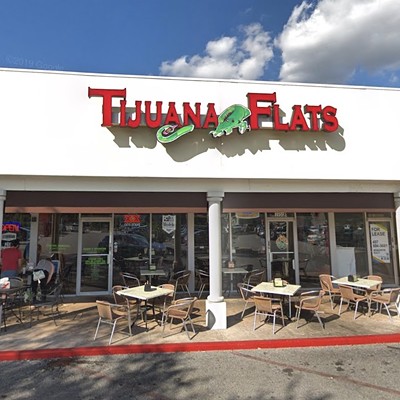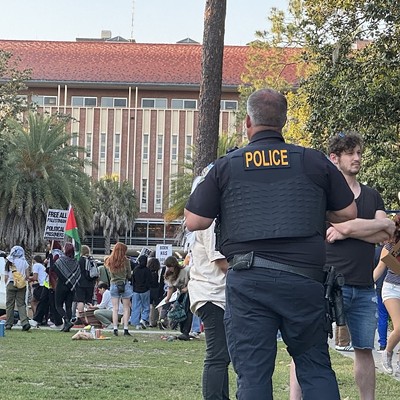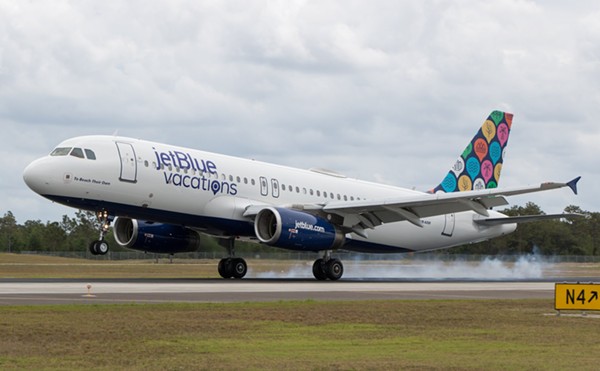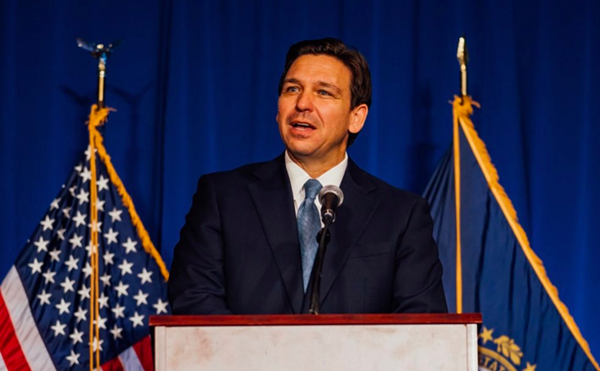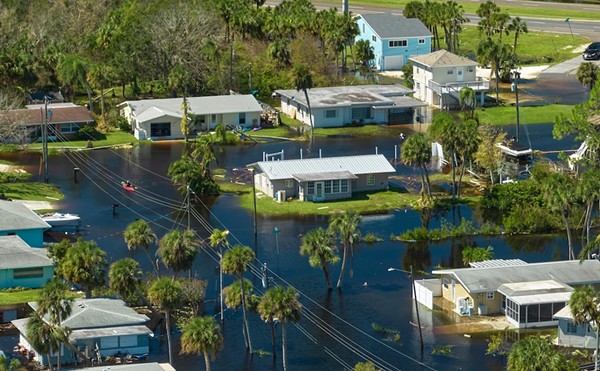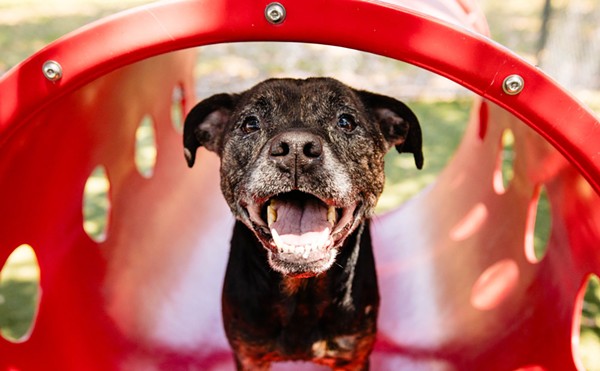Private space! Private space!"
These are the only English words known to the barking Japanese man keeping guard over a secret mountain cove on the Pacific Ocean in Taiji, Wakayama prefecture, on Japan's southern coast. Taiji is a whaling community, best known for its whale museum, and the city is littered with signs, billboards and statues of elegant killer whales and adorable dolphins.
Down the road, however, just around the corner from where Private Space (as he's called by Westerners) and a handful of other intimidators stand ready to chase away activists and onlookers, the sea water in the cove is a brilliant red, the only remaining evidence of a bloodbath that took place before the sun had fully risen.
What Private Space doesn't want you to see is a hunt that takes place at this cove and in other spots around Japan. It is a government-sanctioned, immensely secretive and fabulously lucrative slaughter of dozens of dolphins per day. The killing season lasts six months a year and it's estimated that nearly half a million dolphins have been slaughtered this way since the '80s.
It's a practice that tourist-friendly marine attractions like SeaWorld and even the U.S. Navy have, according to documents from Earth Island Institute, helped to fund as recently as 1988 through their purchase of dolphins. (The United States bans the importation of marine mammals taken from so-called drive hunts). The filmmakers argue that while those organizations no longer directly contribute to the Japanese slaughter of dolphins, they do little to stop it and are thereby complicit.
"SeaWorld will adamantly claim that none of their dolphins, as well as dolphins of any organization connected with their Alliance of Marine Mammal Parks and Aquariums `AMMPA`, collects dolphins from the `Japanese` drive fisheries. However, I believe that is a big lie," writes Louie Psihoyos via e-mail. Psihoyos is the director of a harrowing and thrilling new documentary about the Japanese dolphin hunts, The Cove, which is opening locally this weekend. (In the interest of fairness, it should be noted that Psihoyos does not offer any proof that SeaWorld or the Alliance of Marine Mammal Parks and Aquariums still participate in the Japanese dolphin hunts, and his movie does not implicate them.)
The Cove focuses on dolphin activist Ric O'Barry's efforts to document the barbarism on film. The Taiji government has described the killings as "pest control." Their justification is that the dolphins are eating too many fish in their seas, fish needed to feed citizens, an argument that ignores the overfishing of the waters. Presented with that justification in the film, Members of the International Whaling Commission, a whaling regulatory organization, deemed it "biological nonsense."
The Japanese government also claims in the film that dolphin meat is a desired food commodity, though the filmmakers debunk that notion by doing man-on-the-street interviews and getting wild-eyed stares of horror in response. Besides that, the film explains, Japanese dolphins are so riddled with mercury, thanks to seaside factories, that eating them isn't a good idea.
So how can Japan continue killing dolphins? Because, says O'Barry, they are well-funded by museums, attractions and research facilities worldwide willing to pay hundreds of thousands of dollars for first pick.
Representatives from these places send divers, who line up in a row as the dolphins are driven to the cove using an inhumane method wherein acoustic tubes are sunk into the water and pounded repeatedly, throwing the dolphins' sonar into a tailspin. The divers pick out the cutest and healthiest of the lot, and the rest are harpooned, clubbed and stabbed to death, their screams rippling the tide.
None of this would be widely known without the efforts of a daredevil team that infiltrated the area seen in The Cove. Led by Miami resident O'Barry, who trained dolphins for the show Flipper and, he admits, sent the captive-dolphin industry into the stratosphere, the self-described Ocean's 11-style crew managed to accomplish what many others have risked their lives to do: expose this practice to the world.
O'Barry, a fit, white-haired man with a no-nonsense demeanor, teamed with first-time director Psihoyos, who says in The Cove that at first he thought O'Barry was a paranoid lunatic because he would cover his face with a mask while driving through Taiji and hunch over the steering wheel to impersonate an older Japanese man.
"We've got someone on our tail," O'Barry insisted on one of their outings. When the duo stopped someone and asked about the white car that had been following them everywhere, the person replied, "That's the chief of police."
"I don't fear those policemen," says O'Barry. "They're so angry at this point, because they can't sell their product locally. I've exposed so much about the mercury contamination to the point where the Japanese public won't buy their product. I worry about the Japanese mafia. I worry about the Yakuza. When I wear a disguise in public, I'm doing it to hide from the Yakuza."
The titular cove is geographically perfect for the covert slaughters. Surrounded on three sides by jagged cliffs, it would take a daredevil to penetrate its one accessible edge without going through the guarded entrance. So O'Barry teamed with several such daredevils: Charles Hambleton, a crew member on the Pirates of the Caribbean movies with a penchant for thrill-seeking; National Geographic and Discovery Channel cameraman Brook Aitken; a team of expert free-divers willing to risk injury and death for the dolphins; and, finally, a small team from special-effects house Industrial Light & Magic to devise high-definition cameras, placed at the cove and disguised as rocks and shrubbery. To import all this equipment into the wary prefecture, O'Barry enlisted the help of Joseph Chisholm, a veteran concert and festival organizer adept at sneaking items past customs.
The Cove focuses on that Mission: Impossible more than anything else, and the Dirty Dozen style makes it by far the most exciting documentary to come along in years. Despite the horrifying nature of what they are attempting to put an end to, The Cove plays like an adventure, one filled with real-life heroes, including the two Taiji city council members who put their jobs on the line to stop a government plan to introduce dolphin meat into school cafeterias. The film also focuses on an effort by Heroes star Hayden Panettiere and Australian surfers -— one of whom points out that a dolphin once T-boned a shark that was aiming for him while he was surfing and saved his life — to draw attention to the matter by staging a "sit-in" by the cove on their surfboards. (That action resulted in an arrest warrant being issued for Panettiere that was later dropped after she met with the foreign minister.)
By the time the footage comes back, the crew and the audience alike breathe a deep sigh of relief, partly because they caught the footage needed to damn the fishermen, but also because nobody died during the ordeal. The underwater camera that took days of planning and a terrifying operation to install is only utilized once in the film, because the dolphins' blood renders it blind.
There hasn't been a more genuinely frightening experience at the movies this year than when the filmmakers' sonar locates two glowing figures in the distance and they realize they've been spotted, or when the Japanese police inform O'Barry the next day that they know it was him.
"I was still skeptical `whether audiences would respond` until I went to the Sundance Film Festival," says O'Barry. "At Sundance, there were eight screenings and at every screening since then was a very long standing ovation, and that is because the film is very entertaining. So the filmmakers met that challenge. Somehow, they turned this nightmare into an entertaining 90 minutes."
O'Barry has guarded hope that The Cove will shine the brightest light yet on the Japanese dolphin killings. He says director Luc Besson (The Fifth Element, The Professional), who is partial owner of a Japanese distribution company, is bringing the film to Japanese theaters. He also says that some festival organizers have conveyed that The Cove could see an Oscar nomination in January, and that on his next trip to Taiji, he will be joined by actor Ben Stiller, who took a keen interest in the cause after screening The Cove. The film is certainly the largest victory in a series of incremental wins for O'Barry over the last few decades.
The importation of Japanese-taken dolphins to the U.S. was shut down by 1993, thanks to letters written by O'Barry's employers, Earth Island Institute, where O'Barry is on staff as a marine mammal specialist. In response to O'Barry's letters, the National Oceanic and Atmospheric Administration informed Earth Island that permits issued to Florida's Miami Seaquarium and the now-defunct, California-based Marine World Africa for importation of false killer whales from Japan would be allowed to expire. O'Barry says the trail of U.S. importation of marine mammals from Japan went cold shortly thereafter.
But O'Barry and others connected to the film strongly believe that SeaWorld's silence and failure to publicly demand that the hunts be halted is tantamount to guilt by association.
SeaWorld, for its part, freely admits that it benefited from the Japanese hunts in the past.
"We did indeed acquire small whales and dolphins from this hunt in the '80s and we make no apologies for that," says Fred Jacobs of Busch Entertainment Corp., parent company of SeaWorld, Discovery Cove and Aquatica, via e-mail. "We have also never made a secret of it. The only animals that ever survived a drive fishery were those taken by zoos and aquariums for public display."
But that was a long time ago, says Jacobs. Today, he says, upward of 80 percent of SeaWorld's marine mammals are born in their parks. The remaining collection is made up of animals collected from the wild "many years ago," some traded or bought from other zoological institutions (including a small number that Jacobs admits are wild-caught), and rescued animals deemed "unreleasable" by the United States government. Jacobs says hundreds of marine mammals are treated and released back into the wild every year by SeaWorld.
The SeaWorld Corporation is arguably the most powerful member of a blanket organization called the World Association of Zoos and Aquariums, whose stated mission is "to guide, encourage and support the zoos, aquariums and like-minded organizations of the world in animal care and welfare, environmental education and global conservation." Seven WAZA members are zoos and aquariums from Japan and many others, including the Taiji Whale Museum, are official members of JAZA, the Japanese wing of the organization.
O'Barry believes that the parent organization needs to do something about the Japanese hunting.
"They have the power to kick out JAZA," he says. "I've gone to WAZA's office and tried to talk to them in their headquarters in Bern, Switzerland, and all they did was lock their door and hide under their desks. And what WAZA's done is release a politically correct statement saying, ‘We condemn these slaughters,' and it's nothing more than tokenism. It's just a disguise for apathy. They can police their own industry. I live in Miami and I don't have any money. If I can get to Taiji five, six times a year as an individual, they can get there, too. But they don't have an intention of policing their industry and stepping onto that slippery slope."
Jacobs counters that O'Barry is aiming at organizations like SeaWorld because they are easy targets.
"AMMPA `which SeaWorld belongs to` has been very vocal in its opposition to the drive fishery," he says. "Ric O'Barry is using the drive fishery to once again target organizations like SeaWorld, organizations that have had nothing to do with the drive fishery for two decades. That is his right, but he is in no way a credible figure. His views are extreme even by the standards of the animal welfare community."
"The message of The Cove, that the drive fisheries must stop, powerfully echoes the position of `AMMPA` and its members," says Menard. "We're pleased that this movie is raising public awareness about the brutality of Japan's drive fisheries. We believe it will contribute to the efforts to end this inhumane practice, a practice the Alliance and its members strongly condemn."
Don't count on SeaWorld, however, to be screening the film to its visitors any time soon.
"We do not view `Ric O'Barry` as a partner on this or any other issue," says Jacobs.
Film Review Page - http://www.orlandoweekly.com/film/review.asp?rid=14503
[email protected]

